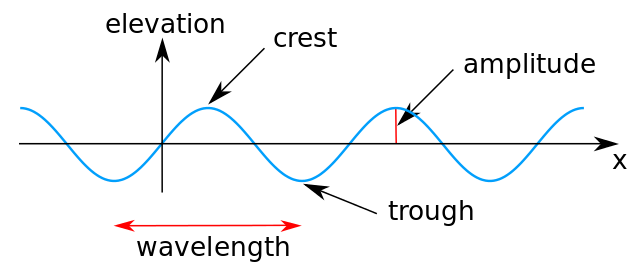Loading AI tools
Dimensionless number indicating the nonlinearity of long surface gravity waves on a fluid layer. From Wikipedia, the free encyclopedia
In fluid dynamics, the Ursell number indicates the nonlinearity of long surface gravity waves on a fluid layer. This dimensionless parameter is named after Fritz Ursell, who discussed its significance in 1953.[1]

The Ursell number is derived from the Stokes wave expansion, a perturbation series for nonlinear periodic waves, in the long-wave limit of shallow water – when the wavelength is much larger than the water depth. Then the Ursell number U is defined as:
which is, apart from a constant 3 / (32 π2), the ratio of the amplitudes of the second-order to the first-order term in the free surface elevation.[2] The used parameters are:
So the Ursell parameter U is the relative wave height H / h times the relative wavelength λ / h squared.
For long waves (λ ≫ h) with small Ursell number, U ≪ 32 π2 / 3 ≈ 100,[3] linear wave theory is applicable. Otherwise (and most often) a non-linear theory for fairly long waves (λ > 7 h)[4] – like the Korteweg–de Vries equation or Boussinesq equations – has to be used. The parameter, with different normalisation, was already introduced by George Gabriel Stokes in his historical paper on surface gravity waves of 1847.[5]
Seamless Wikipedia browsing. On steroids.
Every time you click a link to Wikipedia, Wiktionary or Wikiquote in your browser's search results, it will show the modern Wikiwand interface.
Wikiwand extension is a five stars, simple, with minimum permission required to keep your browsing private, safe and transparent.